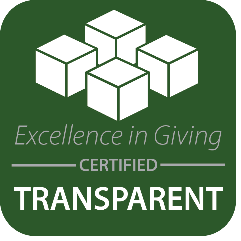Resources for Parents
"Stranger Danger”
Does “Stranger Danger” only apply to people we see in person? What about strangers on the internet?
Nearly 60% of teens have received an email or instant message from a stranger and 1 in 5 children who use the internet have been sexually solicited.
Human trafficking happens here at home, by Americans to Americans. Understanding this crime and how predators find their victims is the key to understanding how we, as a country and as a community, can do better to fight it.
Statistics
Nearly 60% of teens have received an email or instant message from a stranger.
1 in 5 children who use the internet have been sexually solicited.
89% of child victims in active sex trafficking cases in 2020 were between 14 and 17 years old
53% of victims in federal HT prosecutions in 2020 were children
Child sex trafficking happens in all 50 U.S.States, Washington D.C., and Puerto Rico
AGE OF VICTIMS IN 2020 ACTIVE CRIMINAL SEX TRAFFICKING CASES
CHILDREN
14-17 YEARS OLD
0-13 YEARS OLD
ADULTS
18-29 YEARS OLD
30+ YEARS OLD
*Source: 2020 Federal Human Trafficking Report, Human Trafficking Institute
How do predators groom children online?
1
PREY ON TEEN’S DESIRE FOR ROMANCE, ADVENTURE, AND SEXUAL INFORMATION.
2
DEVELOP TRUST AND SECRECY: MANIPULATE BY LISTENING TO AND SYMPATHIZING WITH THE CHILD’S PROBLEMS AND INSECURITIES
3
AFFIRM FEELINGS AND CHOICES OF THE CHILD
4
EXPLOIT THE CHILD’S NATURAL SEXUAL CURIOSITIES
5
XXX
EASE INHIBITIONS BY GRADUALLY INTRODUCING SEX INTO CONVERSATIONS OR EXPOSING THEM TO PORNOGRAPHY
6
FLATTER AND COMPLIMENT THE CHILD EXCESSIVELY, SEND GIFTS, AND INVEST TIME, MONEY, AND ENERGY
7
DEVELOP AN ONLINE RELATIONSHIP THAT IS ROMANTIC, CONTROLLING, AND UPON WHICH THE CHILD BECOMES DEPENDENT
8
DRIVE A WEDGE BETWEEN HIS OR HER PARENTS AND FRIENDS
9
MAKE PROMISES OF AN EXCITING, STRESS-FREE LIFE, TAILORED TO THE YOUTH’S DESIRE
10
MAKE THREATS, AND OFTEN WILL USE THE CHILD PORNOGRAPHY FEATURING THEIR VICTIMS TO BLACKMAIL THEM INTO SILENCE
Keep Your Children Safe Online
Technology is a double-edged sword. A majority of children and teens now enjoy increased screen time and are active on social media, where they’re constantly posting updates about their regular activities and even whereabouts.
As a result, it places them at inadvertent risk as traffickers, who are always on the prowl, have leveraged the wonders of modern communication and technology to scout and scale their reach to their victims.
If you’re a parent wondering “How can I protect my child on the internet?” know that you can implement good child internet safety practices to ensure your child is safe online. Read more about our 12 suggestions you can use to engage, educate, and protect your children online on our blog.
Common risk factors of Child Sex Trafficking
Understanding common risk factors helps identify opportunities to proactively intervene in an effort to prevent child sex trafficking. The National Center for Missing & Exploited Children organized these factors into three categories. The list below is not exhaustive and many factors may be interconnected.
- Racism
- Bullying
- Lack of resources
- Involvement in child welfare or juvenile justice systems
- Gang activity
- Sexism
- Xenophobia
- Inter-generational sexual abuse
- Lack of acceptance of gender identity or sexual orientation
- Housing instability
- Immigration status
- Adverse childhood experiences:
- Domestic violence
- Household substance abuse
- Physical/emotional neglect or abuse
- Sexual abuse
- Families with untreated mental health issues
- History of trauma
- Lack of supportive family or adult figures
- Low self-esteem
- Developmental or physical disability
- Substance abuse
Common Physical and Emotional Indicators of Trafficked Children
These indicators provided by the National Center for Missing & Exploited Children should not be considered an assessment tool. Rather, if observed they can be an opportunity to dive deeper and ask questions. Due to shame, guilt, or fear survivors of child sex trafficking often are unable to self-identify as victims.
- Signs of sexual or physical abuse
- Symptoms of neglect such as malnourishment
- Unaddressed or chronic medical/dental issues or STIs
- Close association with an overly controlling adult
- Recovered at hotels, street tracks, strip clubs, or other locations where commercial sex is known to occur
- Has a secret cell phone or apps providing multiple cellphone numbers
- In possession of material items inconsistent with the child’s access to money or socioeconomic status
- Living out of suitcases, motels, in a car or other evidence of housing insecurity
- In possession of bulk sexual paraphernalia such as condoms or lubricant
- Unexplained access to large amounts of cash, pre-paid cards, or hotel keys
- Tattoos or other branding, such as those indicating money or matching other known trafficking victims, or that the child is reluctant to explain
- References traveling to other cities or states while missing, or while their whereabouts were unknown
- Drug abuse or frequent use of “party drugs” such as GHB, Rohypnol, Ketamine, MDMA (Ecstasy), or Methamphetamines
- Chronically runs away from home (especially 3+ missing incidents)
- Unexplained absences from school
- Constantly sleeps during class
- Stops engaging in activities they previously enjoyed
- Abruptly disconnects from family and friends
- Significant changes in behavior, including their online activity
- Appears overly frightened, annoyed, resistant, or belligerent to authority figures
- Avoids answering questions or lets others speak for them
- Lies about age and identity or has a secret online profile
- Uses language or emojis often associated with commercial sex such as “trick”, “the life”, or “the game”
- References online escort ads or dating websites/apps
What are the signs that your child may be groomed by a predator?
Wanting or asking to spend more time on the internet
Being secretive about the sites they visit or who they are talking to online
Switching screens when you come near them when they are on their phone or computer
Possessing new items you haven’t given them, especially electronic devices
Using sexual language you wouldn’t expect children to know or that is not age-appropriate
Emotions that become more volatile
Join the Fight!
Every trafficking case represents a person who has been exploited by a predator. With your support, we can give our law enforcement partners the tools they need to solve more cases faster.
Human Trafficking Safeguard App
With one simple app, you can access the world’s most extensive digital database of potential human trafficking activity. By simply inputting a phone number or email, you will instantly be alerted if it has links to our database records. Empower yourself to help ensure the safety of your community with the Human Trafficking Safeguard app.
Welcome to the movement to end human trafficking and child exploitation.
Receive updates from DeliverFund
Sign up to receive our monthly newsletter.
We’ll keep you informed on our fight against human trafficking, and how you can help.






